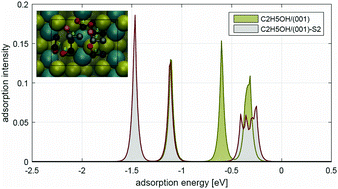Computational investigation of gas detection and selectivity on TiS3 nanoflakes supported by experimental evidence†
Abstract
Titanium trisulfide (TiS3), a transition metal chalcogenide, bears the potential to replace silicon, when taking the form of nanoflakes, due to its favorable band gap and optical response. In this paper, we investigate the response of TiS3 nanoflakes to gas detection through a careful quantum computational approach and a few succinct measurements. The computations are benchmarked and compared with a relevant experiment at each step, where their results/conclusions are discussed. The most stable surface of TiS3 particles is determined as (001), in agreement with the literature. The adsorption of 5 gas molecules is characterized through formulating and estimating their adsorption intensity values, rather than using singled-out values of binding energies. This formulation, which is rooted in a statistical view of the gas adsorption process, distinguishes H2 and CH4 molecules from H2O and O2 explicitly and unambiguously through comparing their adsorption profiles. The difference in the adsorption intensities thus predicts and elucidates the difference in the sensing behaviour of TiS3 particles. This work suggests that the computationally obtained profile for the adsorption spectrum of gas molecules serves as a tool/criterion to predict the selectivity of their detection by TiS3.



 Please wait while we load your content...
Please wait while we load your content...